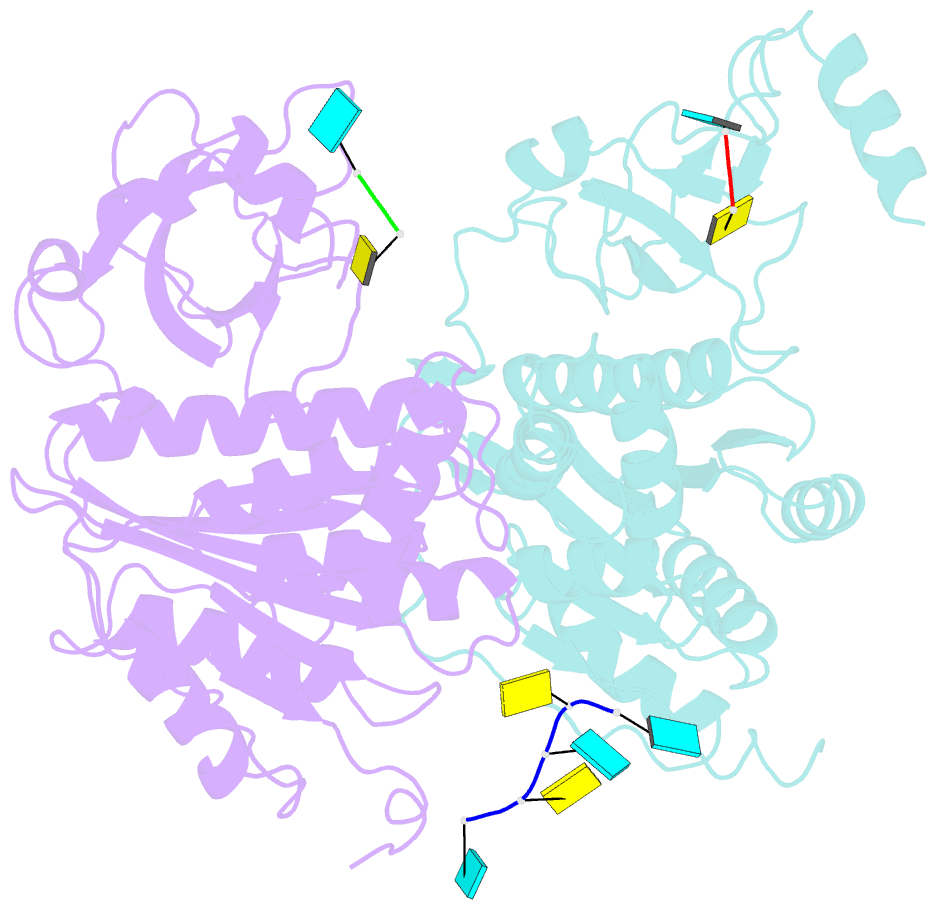Summary information and primary citation
- PDB-id
- 2ht1; SNAP-derived features in text and JSON formats;
DNAproDB
- Class
- hydrolase-RNA
- Method
- X-ray (3.51 Å)
- Summary
- The closed ring structure of the rho transcription termination factor in complex with nucleic acid in the motor domains
- Reference
- Skordalakes E, Berger JM (2006): "Structural Insights into RNA-Dependent Ring Closure and ATPase Activation by the Rho Termination Factor." Cell(Cambridge,Mass.), 127, 553-564. doi: 10.1016/j.cell.2006.08.051.
- Abstract
- Hexameric helicases and translocases are required for numerous essential nucleic-acid transactions. To better understand the mechanisms by which these enzymes recognize target substrates and use nucleotide hydrolysis to power molecular movement, we have determined the structure of the Rho transcription termination factor, a hexameric RNA/DNA helicase, with single-stranded RNA bound to the motor domains of the protein. The structure reveals a closed-ring "trimer of dimers" conformation for the hexamer that contains an unanticipated arrangement of conserved loops required for nucleic-acid translocation. RNA extends across a shallow intersubunit channel formed by conserved amino acids required for RNA-stimulated ATP hydrolysis and translocation and directly contacts a conserved lysine, just upstream of the catalytic GKT triad, in the phosphate-binding (P loop) motif of the ATP-binding pocket. The structure explains the molecular effects of numerous mutations and provides new insights into the links between substrate recognition, ATP turnover, and coordinated strand movement.





